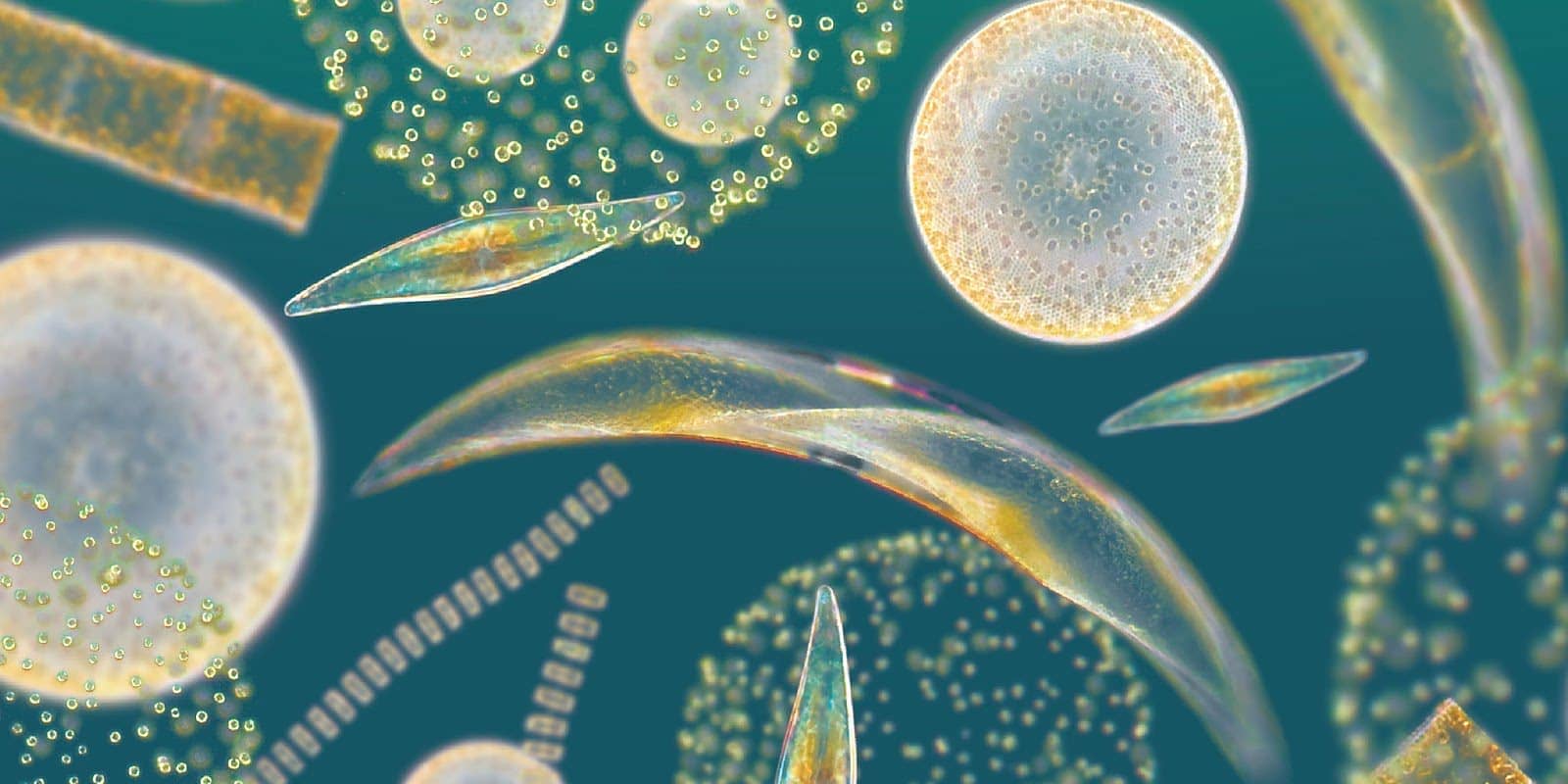
As climate change accelerates and global CO₂ emissions continue to rise, scientists are increasingly turning to nature-based solutions. One of the most promising allies in this fight is something invisible to the naked eye — phytoplankton. These microscopic ocean dwellers may hold the key to a revolutionary approach: phytoplankton carbon capture.
In this article, we explore how these tiny organisms naturally remove CO₂ from the atmosphere, the potential of building phytoplankton “factories,” and the challenges and ethical implications of engineering such a solution.
🌿 What Are Phytoplankton and Why Do They Matter?
Phytoplankton are microscopic, plant-like organisms that float in oceans, seas, and freshwater bodies. Despite their size, they are responsible for producing over half the Earth’s oxygen and form the foundation of the marine food web. But what truly makes them extraordinary is their role in phytoplankton carbon capture — the natural process where they absorb carbon dioxide during photosynthesis.
When phytoplankton grow and multiply, they take in large quantities of CO₂. Once they die, some of them sink to the ocean floor, effectively locking away the carbon for hundreds or even thousands of years.
This mechanism, known as the biological carbon pump, has been happening for millions of years — nature’s original carbon capture technology.
🧪 Can We Enhance This Natural Process?
Recent research suggests that we can take what phytoplankton already do — and amplify it. Scientists are investigating the possibility of establishing phytoplankton “farms” or “factories” in areas of the ocean where growth conditions can be optimized.
These would not be factories in the industrial sense, but managed marine zones enriched with nutrients to stimulate phytoplankton blooms. Iron, for instance, is one nutrient often lacking in parts of the ocean. By adding it strategically, researchers hope to trigger larger and more productive blooms — and therefore boost phytoplankton carbon capture.
This method, often referred to as ocean fertilization, has been tested on a small scale, but global implementation remains under discussion due to ecological uncertainties.
🌐 Why the Ocean Is Crucial in Climate Action
The ocean already absorbs about 25% of the carbon dioxide we emit each year. While land-based reforestation and carbon capture technologies play a role, they are limited by space, cost, and infrastructure. The ocean, by contrast, covers over 70% of the Earth’s surface — and phytoplankton are already doing the work.
The challenge lies in supporting this process without causing harm. Uncontrolled blooms could lead to oxygen depletion zones or disrupt existing ecosystems. That’s why scientists are moving cautiously, balancing the promise of phytoplankton carbon capture with responsible management.
⚠️ Risks, Challenges & Ethical Considerations
While the idea of accelerating natural carbon capture through phytoplankton sounds simple, the reality is complex:
-
Ecosystem disruption: Boosting phytoplankton could unintentionally harm fish populations or shift marine food webs.
-
Unpredictable outcomes: Climate systems are delicate. Large-scale intervention might have unforeseen consequences.
-
Geoengineering concerns: Some critics argue this approach borders on geoengineering and should be treated with strict regulation.
Despite the challenges, the potential benefits cannot be ignored. Unlike artificial technologies that consume vast energy and resources, phytoplankton carbon capture offers a low-energy, scalable, and potentially cost-effective solution.
🛰 What’s Being Done Now?
Several scientific initiatives and environmental NGOs are exploring ocean-based climate solutions. For example:
-
The Global Ocean Observing System is investing in tools to monitor phytoplankton growth and health worldwide.
-
Project Drawdown, a leading climate think tank, includes marine-based solutions in their list of key climate interventions.
-
Research teams from institutions like MIT and the Alfred Wegener Institute in Germany are actively studying how to make phytoplankton carbon capture safe and effective.
Learn more at Project Drawdown and AWI Marine Research.
🔍 How Do Phytoplankton “Factories” Work?
Picture a carefully monitored area of the ocean enriched with trace nutrients like iron and nitrogen. Using autonomous buoys and satellite tracking, researchers could monitor bloom size, CO₂ uptake, and ocean chemistry.
Key components would include:
-
Sustainable nutrient delivery (e.g., recycled iron from volcanic ash or algae waste)
-
AI-assisted monitoring for carbon absorption metrics
-
Transparent international collaboration for regulation and ethics
This approach is not about forcing nature, but nudging it. If done right, phytoplankton carbon capture could become a pillar in our climate response toolkit.
🌎 Why This Matters Now
The Intergovernmental Panel on Climate Change (IPCC) has made it clear: to avoid the worst effects of climate change, we must not only cut emissions but also remove existing carbon from the atmosphere. Natural solutions like phytoplankton carbon capture can buy us time while more permanent changes in energy and policy take shape.
Nature already offers us the tools. It’s time we learned how to use them wisely.
❓FAQ: Phytoplankton Carbon Capture
What is phytoplankton carbon capture?
It’s the process by which microscopic marine organisms absorb atmospheric CO₂ during photosynthesis, helping reduce global carbon levels.
Can phytoplankton help solve climate change?
They won’t replace emissions cuts, but can be a major support system in drawing carbon from the atmosphere naturally.
Are there any risks to boosting phytoplankton growth?
Yes — unregulated interventions can disrupt ecosystems. Careful, small-scale research and strict monitoring are essential.
How is phytoplankton different from tree planting?
Phytoplankton work faster and at a larger scale. Trees absorb CO₂ over years; phytoplankton can act within weeks and affect deep-sea carbon stores.




